-
Posts
1,728 -
Joined
-
Last visited
Content Type
Profiles
Forums
Store
Help Articles
Posts posted by Blether
-
-
All this chicken, white sauce & cream... and still no mention of white wine. So: how about putting some white wine in there ?
-
Thanks, Richard.
-
Blether – what a wonderful piece of photo journalism! I love liver, but haven’t ever tasted fish liver – how does it compare with quadruped liver?
Thank-you, Kim. The liver was closer to the winged kind than the four-legged. "Redolent of the sea" yet rich and distinctly liver-flavoured, it really was delicious. In Japan the liver of the angler fish (anko) is commonly eaten and is considered a delicacy. I have to admit that the idea of eating katsuo liver was a new one on me, even after 18 years here.
I could have helped you out with that lovely HAM. And the quiche, and the pie...

-
In Japan coriander has the reputation of tasting like 'kamemushi' or "Brown Marmorated Stink Bug" (who knew ?!) amongst protagonists. Being as universal in much of Indian and SEA cooking as parsley is further west, is it seen in those places as such a love/hate thing ?
Personally I grew to like it. With a two-week cycle before it goes to seed, it takes some commitment to grow, and it's hard to find value buying it cut at supermarket prices. I don't always use it where I'd like to.
I think it works especially well in guacamole (try small amounts till it reaches your comfort level) and many Indian curries, not least the perhaps-tired-but-reliable Butter Chicken. At the same time, I do respect others' tastes - so no coriander surprise. I think it goes against the basic tenets of cooking to push anything on anyone who doesn't like it.
-
I was indifferent to the Bloody Mary until I tried it with Stolichnaya. Recently I found that Korean 'Jinro' works well in place of the vodka, too. Worcester sauce and lemon juice / slice are compulsory; I can't often be bothered with much more.
-
There's another ramen museum in Shin-Yokohama, where there are lots of little outlets serving ramen in various regional styles.
Back at your 6,000-7,000yeb budget, Hibiki in Shiodome is a good example of a modern, stylish general-menu Japanese restaurant. It's on the 46th floor and the photos at gnavi there don't do it justice at all. Call ahead and be sure to get a window seat.
-
Sure. Top left is a sign saying "just right after the baths - morning beer / medium size bottle 500yen". Next to that is a salted & dried aji / horse mackerel, that's been grilled and is served cold - I ate the whole thing, head, tail, bones and all.
On the tray, hot tea, pile of eggshell, hijiki / preserved seaweed salad with carrot and beans in the blue-striped bowl; I don't remember the item at top right. Beside the peeled egg is a dressed salad of lettuce, corn and (tuna ? don't remember); a little bowl of sliced okra, potato salad 'goma ae' (with ground sesame) and pickles; at the front, bowl of hot rice, natto with Japanese karashi / mustard already squeezed from its little vacuum pack, not yet mixed in; paper sachet of nori that I'll use to pick up clumps of rice; and lastly, miso soup with greens and seaweed. Off the side of the tray is the lid from the soup; between the two diners is the upturned lid from the communal rice bowl.
-
I know next to nothing about Osaka, but as for Kani-douraku, at least in Tokyo, for all of being a long-established chain, and despite some of the waitresses seemingly having worked there for decades, they still do quality crab, well served for a good price. I wouldn't knock it.
Maisen (qv) and one other are the oft-quoted 'best' for tonkatsu in Tokyo amongst (white) foreigners. Surely they're good, but I have my doubts about 'best', or even about how that can be defined. There are upwards of 100,000 restaurants in Tokyo, and we often have guests asking things here like "what's a good restauarant to go to in Tokyo - I'll be there on Tuesday', which is like asking "where would be a good place to eat on the West Coast of America next Friday ?". (This doesn't apply to you, Prawncrackers). 25 million people live in the Tokyo-Yokohama-Kawasaki conurbation. With the sheer scale of the place, it almost feels unkind to give recommendations - who can genuinely be au fait with such a big scene that also changes so much ?
I find the whole restaurant-choosing thing here quite different to what it is in the UK. So long as you choose Japanese food, it's very difficult in this country to find it poorly made. With some allowances at the very low end of the budget scale, pretty much everything you have will be well-made from good ingredients - it's a combinatioon of the cultural thing with national prosperity that means no Japanese has to eat rubbish - it can always be sent back, and not just small-time. You send me a shipment of old vegetables as an import ? It's coming back your way. As for cleanliness, it's too shameful to poison anyone; generally it'll be as good as you do at home. Nor with the convenience and reliability of Tokyo transport does it always make sense to restrict yourself to one area.
Tonkatsu is a particular favourite of mine - again as I've said before, this time quite recently - wherever you go, it seems easy to stumble on a neighbourhood tonkatsu-ya where the food's great and the prices excellent - even if the decor is from the 50's or 60's
 There's a delivery service that sends a quality tonkatsu dinner to my apartment for 1600yen, all in.
There's a delivery service that sends a quality tonkatsu dinner to my apartment for 1600yen, all in.If you take the Japanese viewpoint, Futaba near Ueno is currently the top user-rated tonkatsu-ya in Tokyo - about 3,000yen for a set meal; Suzubun in Kamata comes second; it seems hard to break the 2,000yen barrier there for the basic set meal. Of course once you order salads or side dishes (not at all necessary, nutritionally) the bill will expand, as it will depending on your capacity for alcohol.
Hope ramen in Sendagaya is an old-time tonkotsu ramen shop with a great reputation, historically. I found the soup pretty repulsive ! Nearby me here is a branch of Kitakata ramen, and I've enjoyed their shio ramen, cha shu men and negi cha shu men (they are *very* generous with the cha shu). Last time, BG couldn't finish hers and asked for a doggy bowl for the noodles and soup - tenchou kindly topped it off with extra slices of cha shu, for free. But I'd be embarassed to pretend to be a guide to ramen places - it's something I only have once in a while.
Ten minutes away in Yotsuya is a venerable Chinese-run ramen place that does the whole pigs-ears-on-down range of pork products, but I'm not sure I want to make it stowed-out-with-foreigners just because I mention it here...
-
I've said it around here before, but it's worth looking up Nick Nairn's (?) microwave steamed pudding at the BBC's food site: butter, sugar, eggs, flour, marmalade and a delicious pudding in 5 minutes after you finished mixing them. In other posts I've talked about making a golden-syrup-or-equivalent version.
-
I have a special request from an ex-LA-resident for Tacos Cabeza. Google explained what they are and they're mentioned here and there on eG, but now I need a recipe. I reckon I can cope with working out meat substitutions / rationalisations (tongue I can get, and, I hope, cheek. Eyes and brains are more of a challenge. I won't be making enough to steam a whole steer head !) - what are the flavourings and cooking approach ? Garnishes ?
Who has made these / knows how to ?
-
That's a colourful bowl of seashells, DL. I love mussels and we don't see them here enough.
-
-
You're leaving us all in the dust, Prawncrackers.
Wow, i've had to rescue Dinner from the ignominy of Page 2! Did everyone eat out this weekend?
Or lost at sea... Saturday saw winds of force 3-4 off the Shonan coast, which gave us a boat speed of 6.5 - 8 knots. Too fast really for line-trawling, but we did get a hook into this rather beautiful skipjack / modori no hon-gatsuo of about 18", seen here being bled as soon as it was off the line:
We broke it down into two fillets per side (go-mai oroshi) on the marina pontoon
go-mai oroshi by Mr. U
reserving the liver.
The liver made a treat at least as exquisite as foie gras, sauteed in a little butter & oil, seasoned with salt & pepper, and served with crusty bread to tear by hand.
The fillets were seared (made into katsuo aburi) over the galley gas, wrapped in kitchen paper and taken off in a carrier bag. After a sailor's party featuring beer, wine, sandwiches, kara-age and other party food, beer, wine, beer & wine, the katsuo made its appearance back in our room at the onsen hotel, as a follow-up to onsen-steam-boiled-eggs.
hon-gatsuo aburi, Vietnamese vodka, background of futon-shiki
Our companion boat stayed closer to the land and held back its speed, coming up with a huge haul including eight mahi-mahi up to 85cm / 34" in length, a couple of katsuo of their own, and a splendid little baby bluefin tuna (meji-maguro) of about 3lbs / 1.5kg.
operation by Dr. T.
which was so popular it lasted about a nanosecond.
Nevertheless the katsuo didn't go to waste
Back at home yesterday, lasagne:
-
Weinoo's right. For your taste, you need to get a certain amount of salt into the product - that's a function of its size & shape, the concentration of the brine and the length of brining time (assuming you use some weight to fully submerge it, too).
Depending on the thickness fof product, you might need to leave it out of the brine for a while for te saltiness to spread throughout - i.e. to migrate into the centre. For any brined product, you can soak in plain water to leach out salt. Again, you might need time afterwards for equalisation.
How do you measure the salt ? Granularity can make a big difference in the amount of salt in a volume measure. Weight is more deterministic. It's standard practice, I believe, to brine with an 80% salt solution - for which a primitive test is that it just floats a raw potato.
-
Perhaps this is a more comprehensive linguistic starting point.
-
Yes, I am planning on learning the phonetic alphabets. From what I've read and been told, however, most of the food items contain a lot of kanji, correct?
That's very sensible. Menus are like menus in English - there are the prosaic and the creative. In your run-of-the-mill izakaya or family eatery, there's plenty of phonetic writing and you can often get a long way toward understanding a menu with them alone. Then there are only a few kanji - say pork, chicken & beef - that you'll soon begin to recognise that will get you further still. The 'sakana' character will help on its own sometimes, but you'll also recognise it as part of the specific kanji for various kinds of fish. Next you'll need to recognise yakimono, agemono, yakitori, nabemono and so on.
Then you get to the 'line-caught Alaskan salmon steak served on a bed of locally-grown green leaf vegetables', aka salmon, spinach and spin, which is another level again. Then they'll suddenly go hand-written on you with sosho-style kanji, and names like 'moonflower pond lilies' and that's the point where you have to practice real-time communication skills (along with most of your Japanese fellow-diners).
-
In another thread I commented on a book that just arrived from Amazon, Marguerite Patten's "Basic Basics - Jams, preserves & chutneys".
She says that it was discovered that rose hips are high in vit C, and much use was made of them in the UK during WWII. Under 'fruit syrups' to be used for hot or cold drinks, or as a basis for / ingredient in jellies, ice creams, sorbets or other desserts, she gives a recipe for rose hip syrup. For myself I wonder how they might be worked to stand in for kewra - rose water, or its essence - in Indian or Middle-Eastern food; I'm sure as a syrup it'd work for example with almond kulfi the way that rosewater syrup does.
ETA: she also suggests preserving the syrup frozen.
-
... I have ordered three Marguerite Patten books, so I can report when I have them...
A Century of British Cooking - a very interesting read, with commentary followed by a selection of recipes, for each decade of the 20th century. I'll be taking a couple of ideas from this one (and referring to it for one or two 70's classics, British-style), but what marks this one out is the historical aspect, and its having enough non-recipe content to be a good read. I don't take her commentary on the last couple of decades as definitive, but found the material from 1910 - 1970 fascinating (I was born in the 60's, myself).
Best British Dishes - chosen for being published in 1988 and readily available. Authentic and packed with recipes - 2 or 3 on most pages. As a recent cold-pork-pie-building initiate, I notice she includes a recipe for this, which Delia never did. She does more 'from the ground up' stuff and less 'oh, here's a way to make British food that's semi-meditteraneanised (and yet consume more cream than you can poke a stick at)' like Delia does. (I'm, harsh on Delia probably more through familiarity than anything else - 'Complete Cookery Course' is probably my most-stained food book). Good details on roasting, a selection of baked goods - comprehensive. This book would work as the only British-food book in a collection.
The Basic Basics - Jams, preserves and chutneys - theory & background as well as a huge range of recipes - including of course the old-fashioned British quince, damson, greengage, gooseberry and the rest, as well as more tropical fruits. Jellies, marmalades, fruit butters, cheeses & curds; syrups, juices and coulis; diabetic preserves; crystallised fruits; a comprehensive chapter on pickling; ketchups and vinegars; and chutneys, yes, including Apple Chutney made just the way I remember doing it from a now long-lost recipe. I'll be making that. And mango chutney - another cause for celebration, for me; I think too I'll be trying orange & lemon chutney. This book is definitely a keeper. All recipes have American measures as well as British.
-
... with the pc, when I'm finished I can snap the chicken bones with one finger - there's nothing left holding it together...
That's interesting to know. I've read that it's the pressure-cooking purification stage of fish canning that makes the fish bones so soft, too.
-
You might add to the pre-amble,
私たちは、数日前から、始めて日本旅行をしています。料理が大好きで、とても日本料理に興味があります。今回は、二週間の間、いろいろな日本の食べ物を楽しみたいと思います。
We came to travel in Japan for the first time a few days ago. We love cooking and are very interested in Japanese food. On this two-week trip, we're planning to enjoy lots of different Japanese foods.
Another useful phrase is 嫌いな物はないです / kirai-na mono wa nai desu / there's nothing we won't eat, viz. we'll try anything.
ETA: Oh yes, and in your shoes I'd add something along the lines of:
アメリカのフィラデルフィア市から来ました。かれは学士号を勉強中です。彼女はサーカスでライオン使いをしています。
We come from Philadelphia in the US. He's studying for a doctorate, and she's a lion tamer in the circus *
* modify as appropriate
If you paste Japanese text into MS Word (even the English version of Word with free East-Asian language support installed), you can then format it so that the phonetic characters appear alongside the kanji - and it only takes about a week to master the two phonetic alphabets.
-
It doesn't help with the casings you have, but when in the UK recently I asked the butcher if he could let me have some sausage casings. He handed a bunch to me loose ("this is what we use"), and I omitted to ask, but I suspect they're collagen. Anyway they look like these ones

- dry, wrinkled-up tubes. I'm guessing they will keep this way for a long time - I have mine kept simply in a plastic bag in my 'dry stores' cupboard. They've made good sausages (err, just like from a real butcher shop... ) - no doubt someone around here could tell me the disadvantages of collagen, but as it stands I don't see myself going back to wrestling with those slippery, easily-torn salt-packed natural jobs again

-
Did I kill this thread ? I hope not.
"Yet each man kills the thing he loves
By each let this be heard.
The coward does it with a kiss
The brave man with a sword"
Hmm.
Shockolate: too much vegetable oil, or at the other end of the scale, more cacao solids than sense.
-
Thanks, Kim. Your panini look very accomplished - and I elbowed three people out of the way before I remembered your cake'n'sauce were just a picture.
-
Kaki fry (breaded oysters). My better half picked 'courgettes with tomatoes' from Christine Osborne's 'Middle Eastern Cooking' sight unseen, and prepared that:
She made a great job and it turned out to be the perfect accompaniment. Flavoured with a little garlic, ground coriander, salt, pepper and an inordinate amount of lemon juice, it was so sour we let it get cool before we fried the oysters.
kaki fry, tonight
Not shown - starters of two big, fresh Iwate-ken oysters each; baby clams with butter / garlic / onion / white wine.
Earlier this summer, tarragon chicken again:




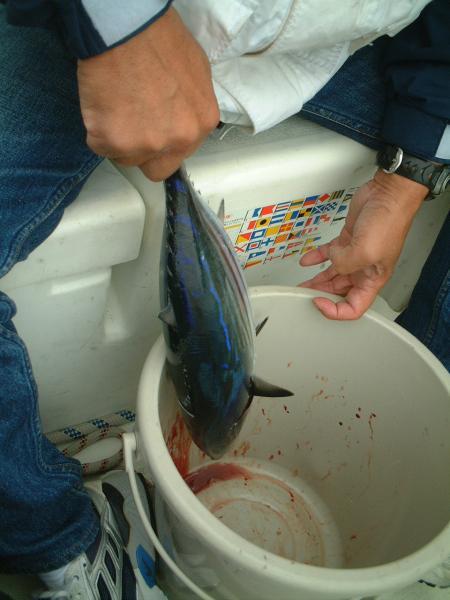
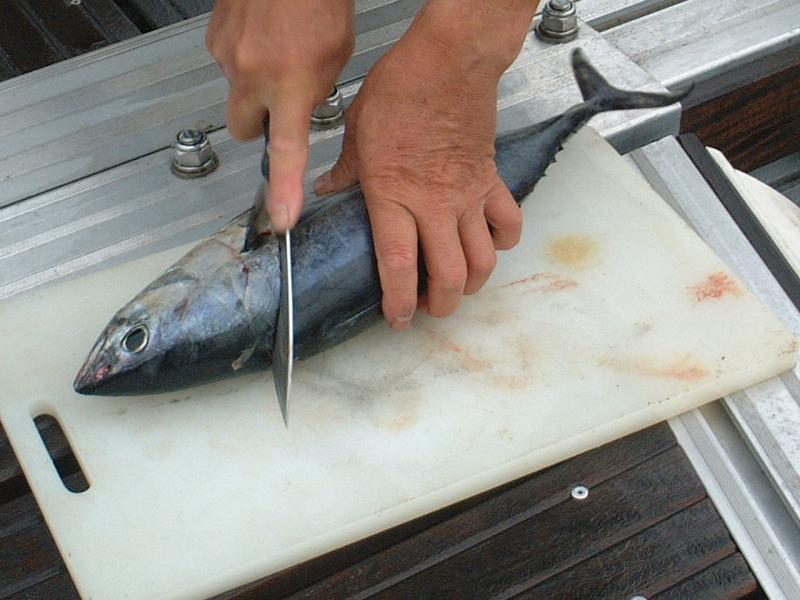

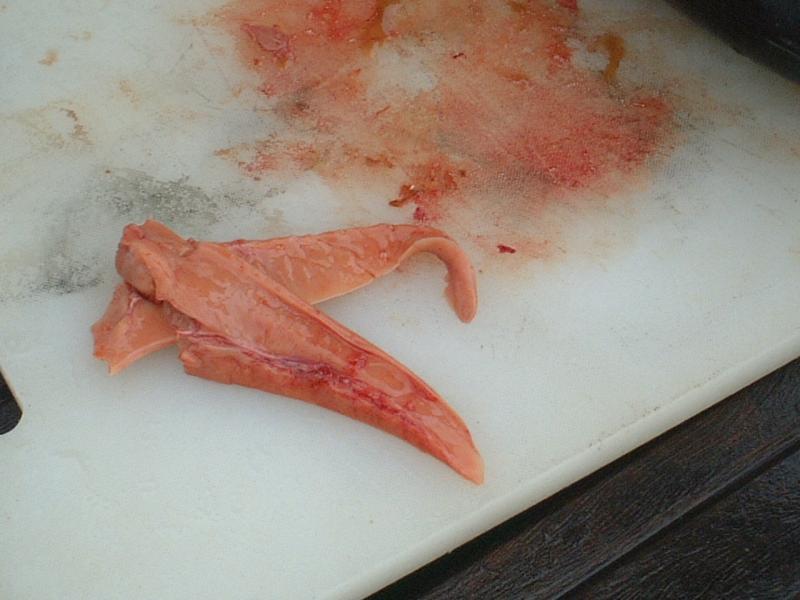
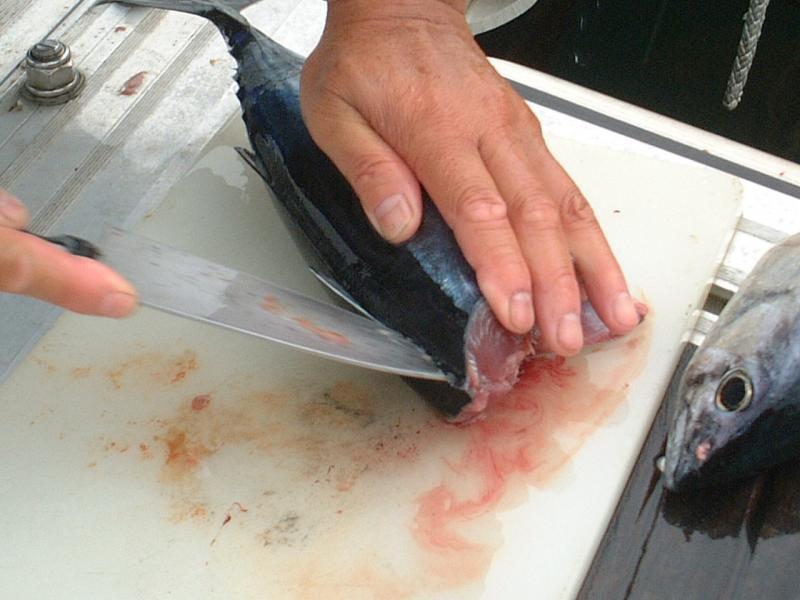
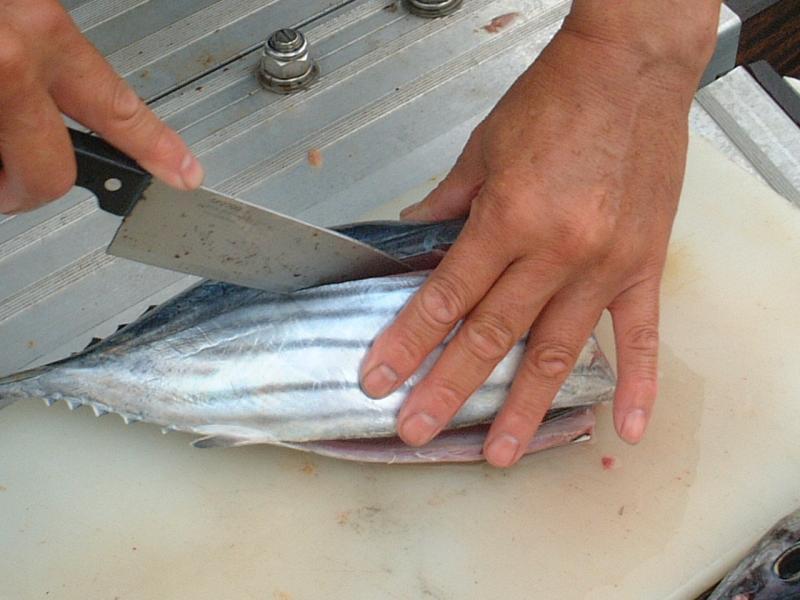
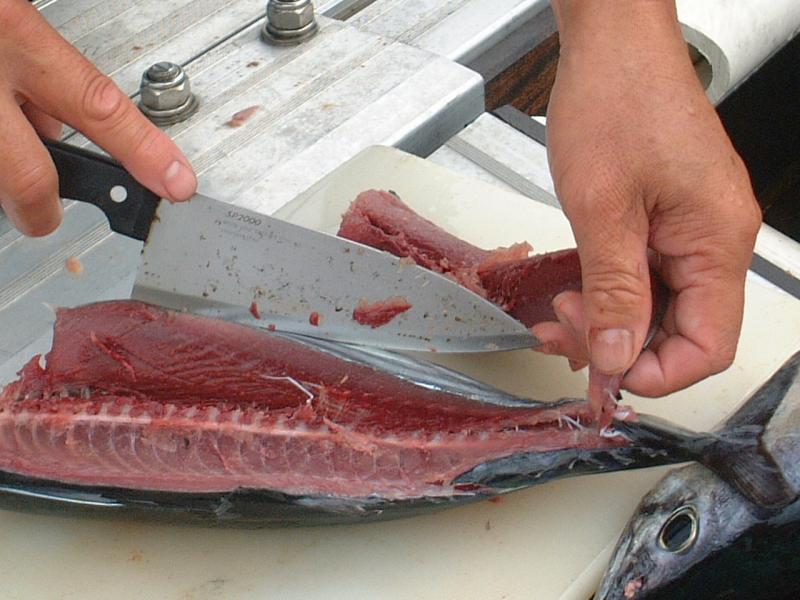
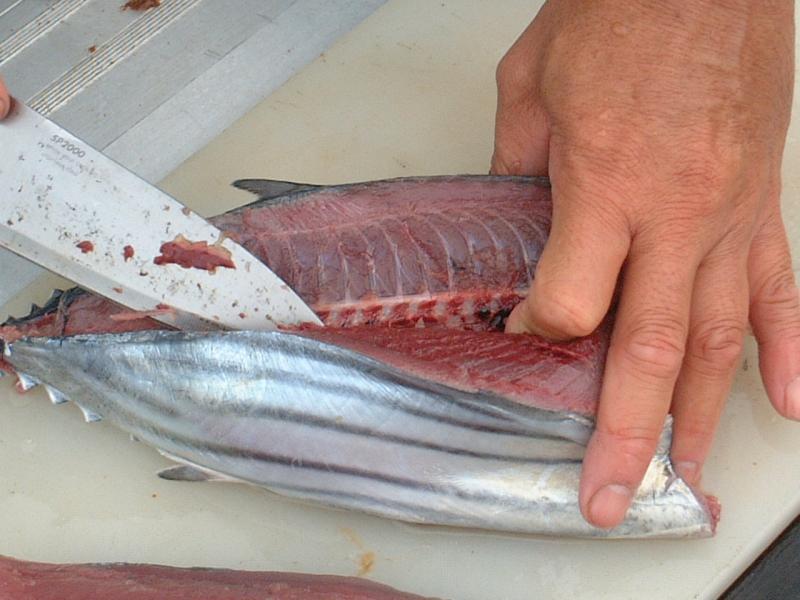
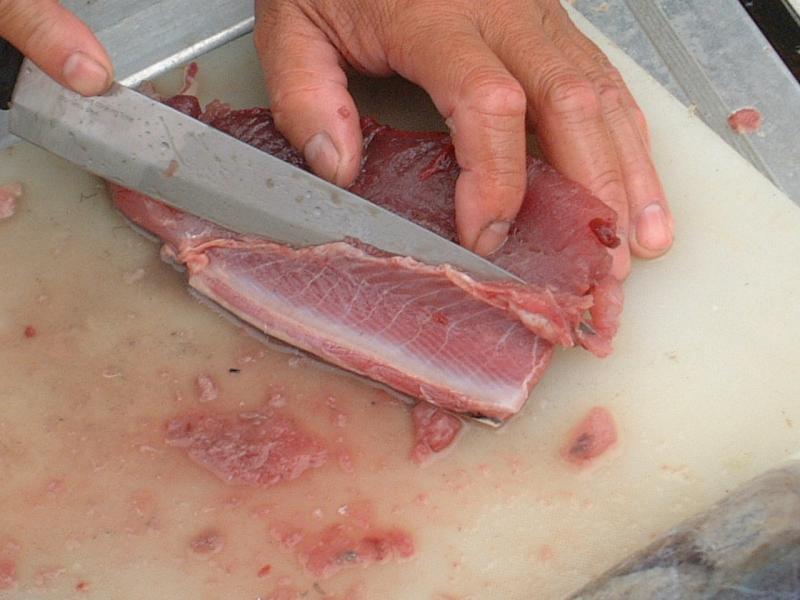
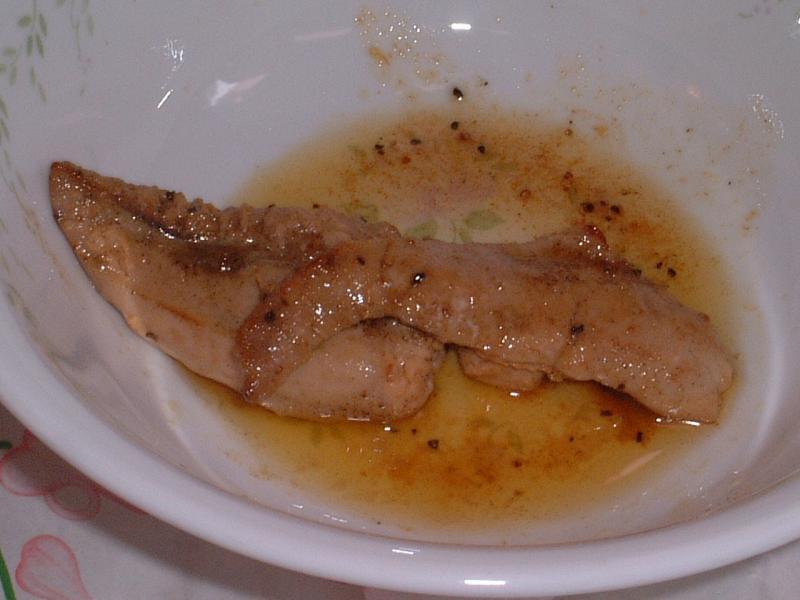
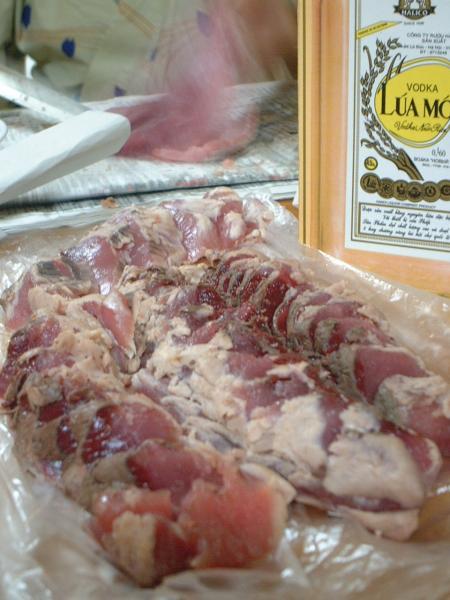
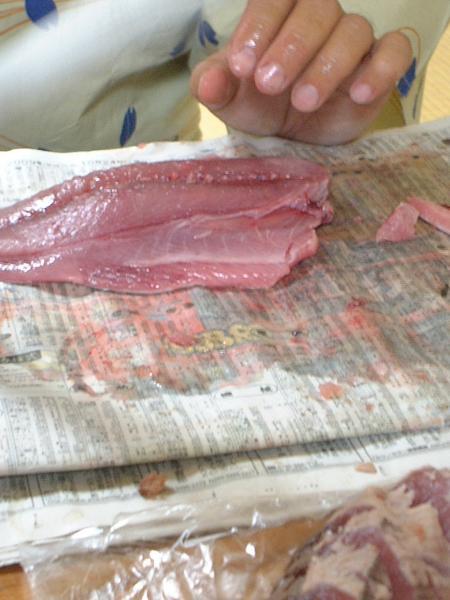
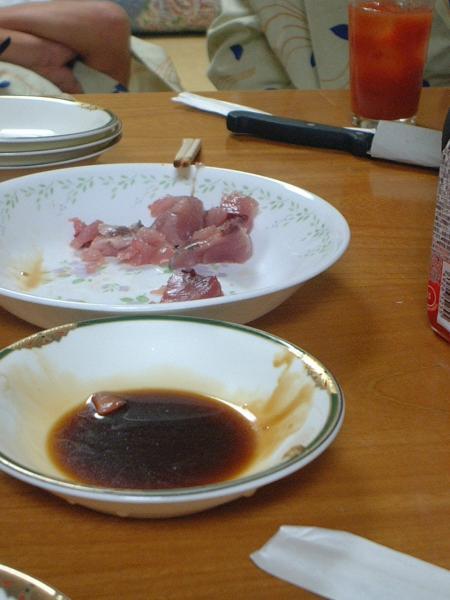

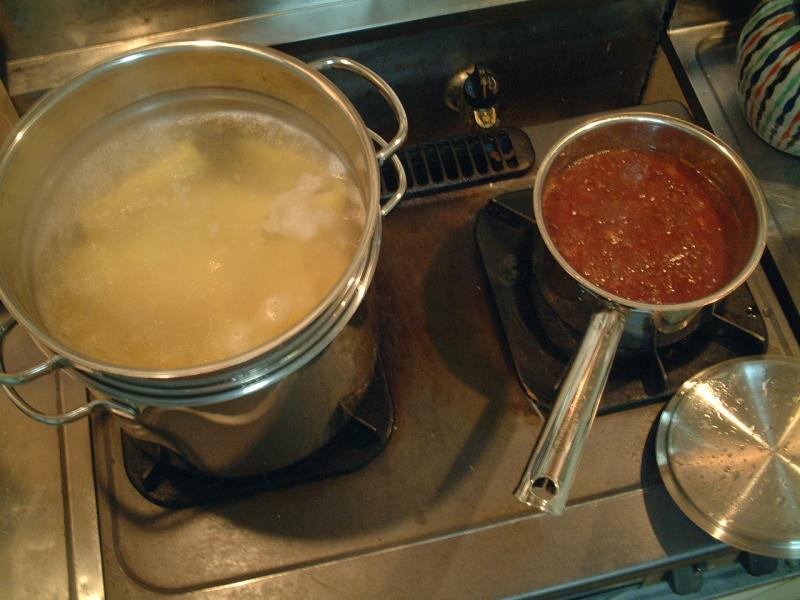
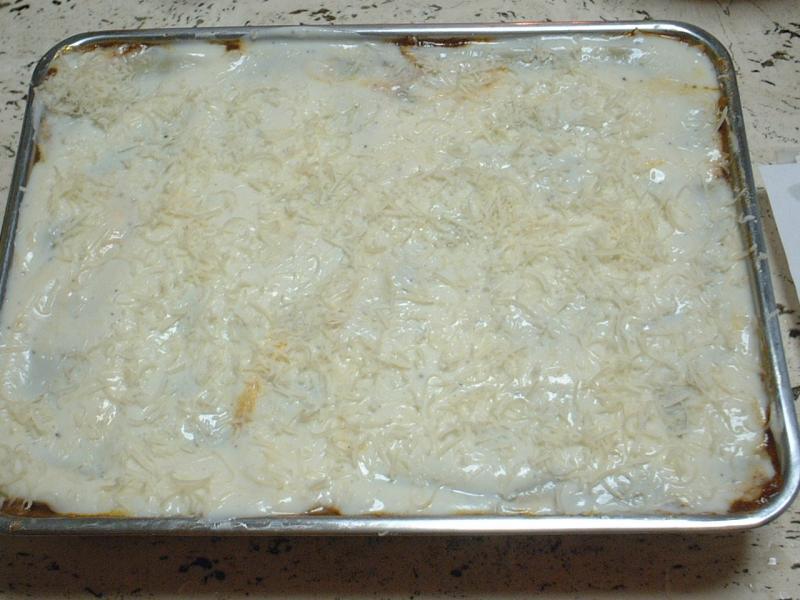
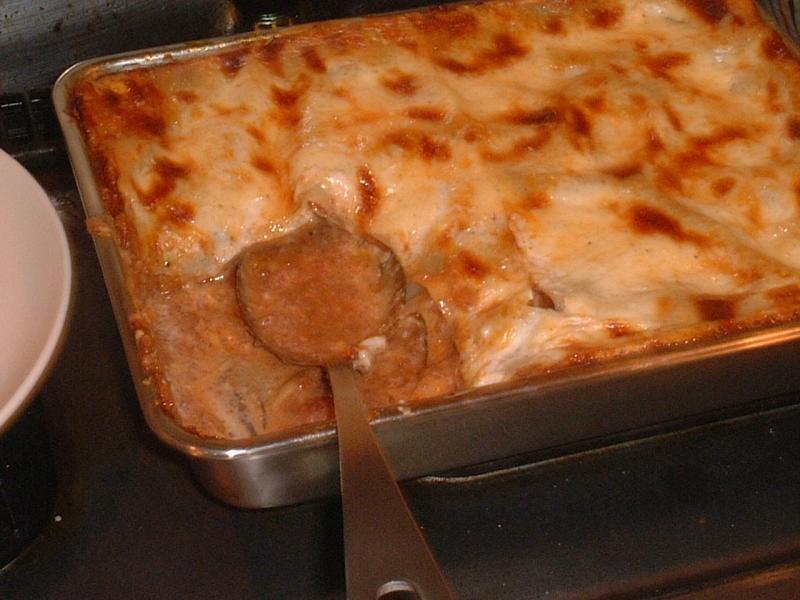


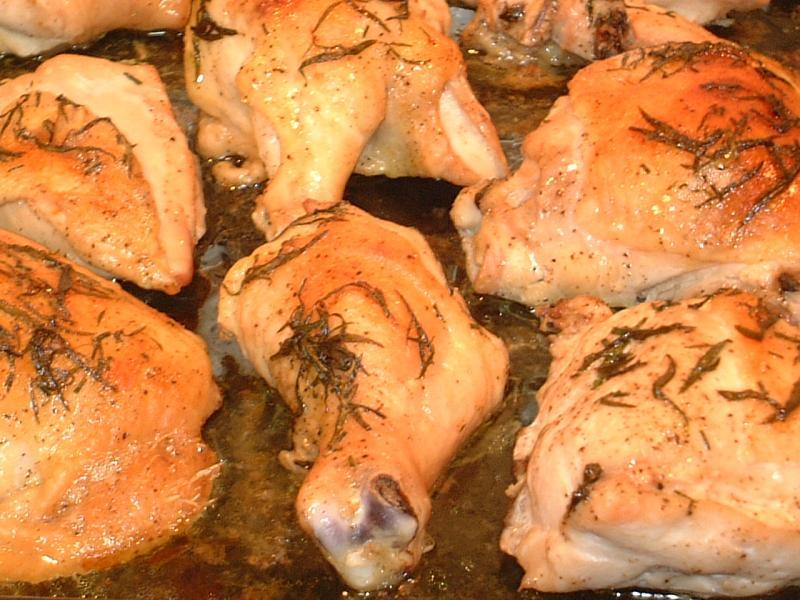
The 3 best mass-produced sweets
in Ready to Eat
Posted
Well, Terry's Chocolate Orange takes the first three places, of course, in a not-so-close contest with Jacob's Orange Club ("If you waaaant, a lot of... "). Then there are Maltesers, and taking Fat Guy's definition of sweets, Marks & Spencer's late lamented Butter Crunch biscuits, and good Raspberry Ripple ice cream sold in cardboard-wrapped rectangular blocks, about 2" x 4" x 12".
Since we're limited to three choices, lastly there are (again Marks & Spencer) - what were they called ? - Double Devon Butter Toffees ? And of course third place goes to After Eight mints, and to Fox's Glacier Mints, Polos, and Murray Mints, and Mint Toffos.
The good news is that all that sugar doesn't even affect your mental abilities in later life. Fairfranco, good call on chocolate rolls - and there are always chocolate fingers, aren't there ?
(I'm sorry, but I didn't grow up with them, and Oreos are rubbish).